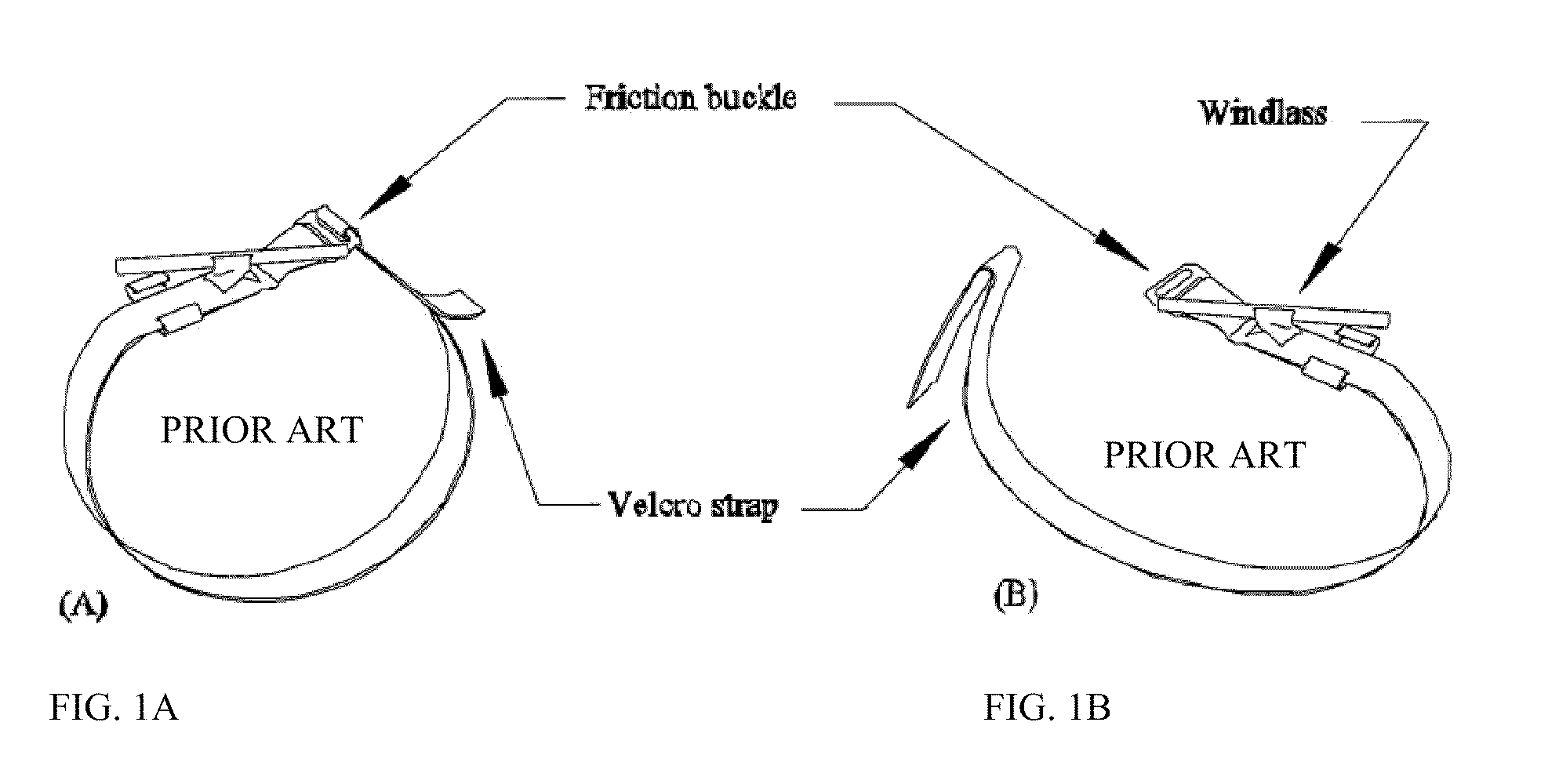Ratchet hook tourniquet
- Summary
- Abstract
- Description
- Claims
- Application Information
AI Technical Summary
Benefits of technology
Problems solved by technology
Method used
Image
Examples
Embodiment Construction
[0028]The preferred embodiment is an improvement of the traditional ratchet tourniquet used to stop uncontrollable bleeding from gunshot wounds and blast injuries to the arms and legs. The currently used ratchet tourniquet has one end of the belt fed through a ratchet mechanism while the other end is permanently sewn around a pin in the ratchet body (FIGS. 2A and 2B). In the preferred embodiment of the invention, this permanently attached end of the ratchet belt is replaced with a detachable flat metal hook, allowing the loop of the ratchet tourniquet to open up.
[0029]Referring to FIGS. 3A and 3B, the tourniquet device of this invention as illustrated in the various embodiments herein is generally designated as 1. The invention has a belt 5, with a first end 10 and second end 15. The first end 10 of the belt 5 is engaged with a ratchet device, generally designated as 20. The ratchet device 20 preferably includes a cylindrical spool generally designated as 25 to which the first end 1...
PUM
 Login to View More
Login to View More Abstract
Description
Claims
Application Information
 Login to View More
Login to View More - R&D
- Intellectual Property
- Life Sciences
- Materials
- Tech Scout
- Unparalleled Data Quality
- Higher Quality Content
- 60% Fewer Hallucinations
Browse by: Latest US Patents, China's latest patents, Technical Efficacy Thesaurus, Application Domain, Technology Topic, Popular Technical Reports.
© 2025 PatSnap. All rights reserved.Legal|Privacy policy|Modern Slavery Act Transparency Statement|Sitemap|About US| Contact US: help@patsnap.com



